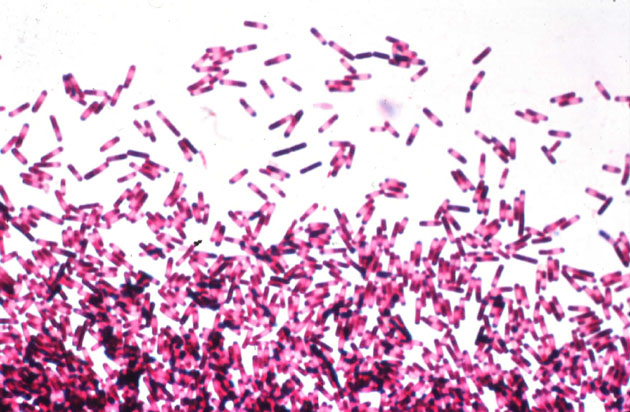 |
| Anaerobes |
The first organisms to evolve on the earth are thought to have been heterotrophs and anerobes. Heterotrophs are organisms that cannot produce their own food but must fill their energy requirements by consuming organic molecules produced by other processes or organisms. Anaerobes are organisms that do not require free oxygen gas in order to survive; for some anaerobes, free oxygen may be poisonous.
Heterotrophs include many familiar organisms (such as animals) whose existence is tied to primary producers, those organisms that create energy-storing molecules, such as photosynthesizing plants. Anaerobes also are common, though less apparent. Typically, they are microscopic organisms restricted to living in a few surface environments where oxygen is absent.
It may seem strange, then, that these organisms were perhaps the first organisms to have evolved on the earth. Yet the combination of the heterotrophic lifestyle and the anaerobic life requirement is consistent with what is known about the conditions of the early earth’s surface environment.
  |
The earliest anaerobic heterotrophs laid the biochemical foundations for the evolution of photosynthesis, free oxygen in the atmosphere, and the rise of complex organisms. All those events had the adverse impact of limiting the range of environments available to the anaerobes.
The world’s first organism evolved in what has been called a "prebiotic soup" of energy-rich organic molecules. Heterotrophic organisms would exploit this environment by absorbing the molecules. A continuing supply of energy-rich molecules depended on the absence of free oxygen in the early atmosphere and the functioning of the abiotic synthesis.
Fermentation
The energy-richmolecules of the soupwere converted to energy by a series of biochemical reactions. One of the simplest, and therefore perhaps one of the oldest, types of energy conversion reactions is anaerobic fermentation.
During anaerobic fermentation, an energy-rich molecule, such as the simple sugar glucose, is dismantled to release energy and waste by-products. Several lines of evidence suggest that this form of energy conversion was utilized by the early heterotrophs.
One indicator that fermentation is a very ancient biochemical process is that the reaction used to release energy from the glucose molecule is very common among modern organisms. The ability to utilize the fermentation reaction is evident in the anaerobic reaction of yeast using sugar and releasing ethyl alcohol.
Although it is not the primary energy-releasing reaction for most organisms, fermentation’s widespread availability suggests that it is very old and perhaps inherited from an early, simpler ancestor.
The fermentation reaction is not very efficient. For example, it releases two units of energy for every glucose molecule, whereas oxidation of the same glucose molecule releases more than thirty energy units.
Such an inefficient reaction for energy release could not be tolerated by an advanced organism with many energy demands. Alternatively, single-celled heterotrophs surrounded by, and absorbing, energy-rich molecules such as glucose (which is unlikely to decompose in an anoxic environment) do not expend much energy in gathering their food.
The Earliest Organisms
Thus, two very different types of evidence—that which points to an anoxic early atmosphere and evidence for the ancient ancestry of the glucose fermentation reaction—suggest that the earliest organism was a single-celled heterotroph that absorbed energy-rich molecules from the surrounding anaerobic environment.
Modern analogues for such an organism exist. Single-celled bacteria, called obligate anaerobes, exist in a few anoxic environments today.
It is likely that the modern obligate anaerobes have not changed significantly (especially in their morphology, or shape and size) from their Precambrian ancestors. Given this much information, paleontologists know that their search for early Precambrian fossils, the petrified remains of organisms, is not easy.
The process of fossilization—that is, the preservation of the shape of an organism in rock—is best at preserving the details of hard body parts. Hard skeletons and shells or their impressions are easier to preserve than are soft body parts. In the case of early Precambrian fossils, the most likely organisms (bacteria) not only are small but also contain no hard body parts.
Despite these barriers to preservation and despite the very poorly preserved Precambrian rock record, some early Precambrian fossil remains have been found and described. The fossils are usually found preserved in rock called chert, which probably began as a gelatinous material. Microscopic remains of organisms embedded in this gelatin were delicately preserved when the chert lost some of its water and solidified.
The oldest fossil remains identified have been found in cherts from southern Africa. These cherts, part of what is called the Fig Tree Formation, are more than three billion years old. The fossils consist of the wispy, spherical remains of what may have been a type of alga and the rod-shaped remains of a possible heterotrophic bacterium.
